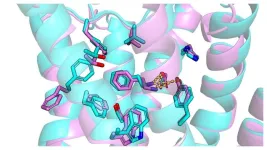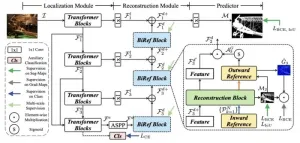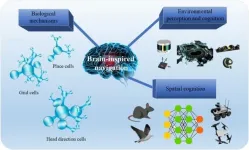(Press-News.org) In a study published today (22 August) in Cell Reports Physical Science, a team led by Dr Yoshikatsu Hayashi demonstrated that a simple hydrogel - a type of soft, flexible material - can learn to play the simple 1970s computer game ‘Pong’. The hydrogel, interfaced with a computer simulation of the classic game via a custom-built multi-electrode array, showed improved performance over time.
Dr Hayashi, a biomedical engineer at the University of Reading’s School of Biological Sciences, said: "Our research shows that even very simple materials can exhibit complex, adaptive behaviours typically associated with living systems or sophisticated AI.
"This opens up exciting possibilities for developing new types of 'smart' materials that can learn and adapt to their environment."
The emergent learning behaviour is thought to arise from movement of charged particles within the hydrogel in response to electrical stimulation, creating a form of 'memory' within the material itself.
“Ionic hydrogels can achieve the same kind of memory mechanics as more complex neural networks,” says first author and robotics engineer, Vincent Strong of the University of Reading. “We showed that hydrogels are not only able to play Pong, they can actually get better at it over time.”
The researchers were inspired by a previous study that showed that brain cells in a dish can learn to play Pong if they are electrically stimulated in a way that gives them feedback on their performance.
“Our paper addresses the question of whether simple artificial systems can compute closed loops similar to the feedback loops that allow our brains to control our bodies,” said Dr Hayashi, a corresponding author on the study.
“The basic principle in both neurons and hydrogels is that ion migration and distributions can work as a memory function which can correlate with sensory-motor loops in the Pong world. In neurons, ions run within the cells. In the gel, they run outside.”
Because most existing AI algorithms are derived from neural networks, the researchers say that hydrogels represent a different kind of “intelligence” that could be used to develop new, simpler algorithms. In future, the researchers plan to further probe the hydrogel’s “memory” by examining the mechanisms behind its memory and by testing its ability to perform other tasks.
Beating gel mimics heart tissue
In a recent related study, published in the Proceedings of the National Academy of Sciences, Dr Hayashi's team, along with Reading colleagues Dr Zuowei Wang and Dr Nandini Vasudevan, demonstrated how a different hydrogel material can be taught to beat in rhythm with an external pacemaker. This is the first time this has been achieved using a material other than living cells.
The researchers demonstrated how a hydrogel material oscillates chemically and mechanically, much like the way heart muscle cells contract in unison. They provide theoretical interpretation of these dynamic behaviours.
The researchers found that by applying cyclic compressions to the gel, they could entrain its chemical oscillations to sync with the mechanical rhythm. The gel retained a memory of this entrained beating even after the mechanical pacemaker was stopped.
"This is a significant step towards developing a model of cardiac muscle that might one day be used to study the interplay of mechanical and chemical signals in the human heart," Dr Hayashi said. "It opens up exciting possibilities for replacing some animal experiments in cardiac research with these chemically-powered gel models."
Lead author of the study, Dr Tunde Geher-Herczegh, said the findings could provide new ways to investigate cardiac arrhythmia, a condition in which the heart beats too fast, too slow or irregularly, which affects more than 2 million people in the UK.
She said: “An irregular heart beat can be managed with drugs or an electrical pacemaker, but the complexity of biological heart cells makes it difficult to study the underlying mechanical systems, independently from the chemical and electrical systems in the heart.
“Our findings could lead to new discoveries and potential treatments for arrythmia, and will contribute to our understanding of how artificial materials could be used in place of animals and biological tissues, for research and treatments in the future.”
Implications and Future Directions
These studies, bridging concepts from neuroscience, physics, materials science, and cardiac research, suggest that the fundamental principles underlying learning and adaptation in living systems might be more universal than previously thought.
The research team believes their findings could have far-reaching implications for fields ranging from soft robotics and prosthetics to environmental sensing and adaptive materials. Future work will focus on developing more complex behaviours and exploring potential real-world applications, including the development of alternative lab models for advancing cardiac research and reducing the use of animals in medical studies.
END
Pong prodigy: Hydrogel material shows unexpected learning abilities
"Hydrogel brain" learns to play pong
2024-08-22
ELSE PRESS RELEASES FROM THIS DATE:
AI can speed up drug development
2024-08-22
Artificial intelligence (AI) can help identify molecules that could serve as new drugs for mental health disorders. AI can be used to predict the three-dimensional structures of important receptors and thereby speed up the development of potential drugs. This is the result of a new study from Uppsala University published in Science Advances.
In drug development, experimental methods are often used to determine the three-dimensional structures of target proteins and to understand how molecules bind to them. This information is needed to design drug molecules efficiently. However, the process to determine structures can be demanding, meaning this ...
Bilateral reference framework for high-resolution dichotomous image segmentation
2024-08-22
A research team has developed a computer vision technique that can perform dichotomous image segmentation, high-resolution salient object detection, and concealed object detection in the same framework. Their novel bilateral reference framework (BiRefNet) is able to capture tiny-pixel features and holds potential for a wide range of practical computer vision applications.
The work is published in the journal CAAI Artificial Intelligence Research on August 22.
In computer vision research, ...
The future of robotics: Brain-inspired technologies paving the way
2024-08-22
In the ever-evolving field of robotics, a groundbreaking approach has emerged, revolutionizing how robots perceive, navigate, and interact with their environments. This new frontier, known as brain-inspired navigation technology, integrates insights from neuroscience into robotics, offering enhanced capabilities and efficiency.
Brain-inspired navigation technologies are not just a mere improvement over traditional methods; they represent a paradigm shift. By mimicking the neural mechanisms of animals, these technologies provide robots with the ability to navigate through complex and unknown terrains with unprecedented accuracy ...
IHME’s 2024 Roux Prize awarded to Community Health Impact Coalition CEO – recognized for contributions to improve population health
2024-08-22
On behalf of the Community Health Impact Coalition (CHIC), Dr. Madeleine Ballard, global health leader and CEO of CHIC, is the Institute for Health Metrics and Evaluation’s 2024 Roux Prize winner. The award recognizes Dr. Ballard’s work alongside thousands of community health workers (CHWs) to secure quality care for all, through evidence-based health systems benefiting millions of people across the world.
Half of the world's population lacks access to essential health services. Around the globe, CHWs have stepped up to address this critical gap and deliver care in a way that improves access, increases equity, and saves lives. Despite their ...
New detectable gravitational wave source from collapsing stars predicted from simulations
2024-08-22
The death of a massive, rapidly spinning star can shake the universe. And the resulting ripples — known as gravitational waves — could be felt by instruments on Earth, according to new research published August 22 in The Astrophysical Journal Letters. These new sources of gravitational waves just await discovery, the scientists behind the research predict.
The gravitational waves emerge following the violent deaths of rapidly rotating stars 15 to 20 times the mass of the sun. Upon running ...
New study examines use of opioids for chronic cough
2024-08-22
INDIANAPOLIS – Chronic cough, with symptoms lasting more than eight weeks, affects approximately one in 10 adults. Cough is among the most common reasons for seeking medical care in the United States, yet chronic cough is difficult to treat. One of the largest studies of chronic cough and one of the first to explore the use of opioids, which are known to suppress cough, to treat these patients, has found that 20 percent of patients with chronic cough received a prescription for a cough suppressant containing an opioid.
With the goals of estimating opioid prescription in the chronic cough population and of informing alternative treatment ...
SwRI develops novel methodology for measuring blood-brain barrier permeability
2024-08-22
SAN ANTONIO — August 22, 2024 —Scientists at Southwest Research Institute have developed a new screening method to identify drug formulations that can penetrate the blood-brain barrier (BBB), to facilitate treatment of brain diseases and conditions.
“The BBB protects the brain and central nervous system from potentially harmful substances in the bloodstream, regulating the transport of essential nutrients and ions while maintaining the stability of the central nervous system,” said Research Engineer Nicholas McMahon, from SwRI’s Bioengineering group. “However, the very characteristics that make the BBB such an ...
Role of bitter polyphenols in the regulation of blood sugar
2024-08-22
Bioactive compounds like polyphenols and their health benefits have long captured public attention and interest. Commonly present in plant-based food like fruits, vegetables, seeds, coffee, and tea, the polyphenols have a strong bitter taste and, in the normal course, is excreted by our body due to poor absorption.
The polyphenols interact with human bitter taste receptors also known as Type 2 taste receptors (T2R) expressed within and outside the oral cavity. Notably, the activation of T2R expressed along the ...
Promising treatment for rectal cancer confirmed in major study
2024-08-22
A new treatment for locally advanced rectal cancer shows favourable results in that surgery can sometimes be avoided completely. It also reduces the risk of recurrence. The method has been confirmed as effective in a comprehensive study conducted at Uppsala University and published in eClinicalMedicine.
“The tumour disappears completely more often, thereby increasing the chance of avoiding surgery and retaining normal rectum and rectal function. Moreover, there are fewer metastases,” says Bengt Glimelius, Professor of Oncology ...
Chronic cough may be hereditary
2024-08-22
Chronic cough is among the most common reasons for seeking medical care, with middle-aged women the group most affected. New studies at Uppsala University also show that this condition appears to be a hereditary phenomenon. The studies have been published in ERJ Open Research and PLOS ONE.
“More than 10% of the population has a chronic cough, which has been shown to entail several negative consequences: reduced quality of life, reduced ability to work and voice problems. At present, we have insufficient knowledge about ...
LAST 30 PRESS RELEASES:
This self-powered eye tracker harnesses energy from blinking and is as comfortable as everyday glasses
Adverse prenatal exposures linked to higher rates of mental health issues, brain changes in adolescents
Restoring mitochondria shows promise for treating chronic nerve pain
Nature study identifies a molecular switch that controls transitions between single-celled and multicellular forms
USU chemists' CRISPR discovery could lead to single diagnostic test for COVID, flu, RSV
Early hominins from Morocco reveal an African lineage near the root of Homo sapiens
Small chimps, big risks: What chimps show us about our own behavior
We finally know how the most common types of planets are created
Thirty-year risk of cardiovascular disease among healthy women according to clinical thresholds of lipoprotein(a)
Yoga for opioid withdrawal and autonomic regulation
Gene therapy ‘switch’ may offer non-addictive pain relief
Study shows your genes determine how fast your DNA mutates with age
Common brain parasite can infect your immune cells. Here's why that's probably OK
International experts connect infections and aging through cellular senescence
An AI–DFT integrated framework accelerates materials discovery and design
Twist to reshape, shift to transform: Bilayer structure enables multifunctional imaging
CUNY Graduate Center and its academic partners awarded more than $1M by Google.org to advance statewide AI education through the Empire AI consortium
Mount Sinai Health system receives $8.5 million NIH grant renewal to advance research on long-term outcomes in children with congenital heart disease
Researchers develop treatment for advanced prostate cancer that could eliminate severe side effects
Keck Medicine of USC names Christian Pass chief financial officer
Inflatable fabric robotic arm picks apples
MD Anderson and SOPHiA GENETICS announce strategic collaboration to accelerate AI-driven precision oncology
Oil residues can travel over 5,000 miles on ocean debris, study finds
Korea University researchers discover that cholesterol-lowering drug can overcome chemotherapy resistance in triple-negative breast cancer
Ushikuvirus: A newly discovered giant virus may offer clues to the origin of life
Boosting the cell’s own cleanup
Movement matters: Light activity led to better survival in diabetes, heart, kidney disease
Method developed to identify best treatment combinations for glioblastoma based on unique cellular targets
Self-guided behavioral app helps children with epilepsy sleep earlier
Higher consumption of food preservatives is associated with an increased risk of type 2 diabetes
[Press-News.org] Pong prodigy: Hydrogel material shows unexpected learning abilities"Hydrogel brain" learns to play pong







